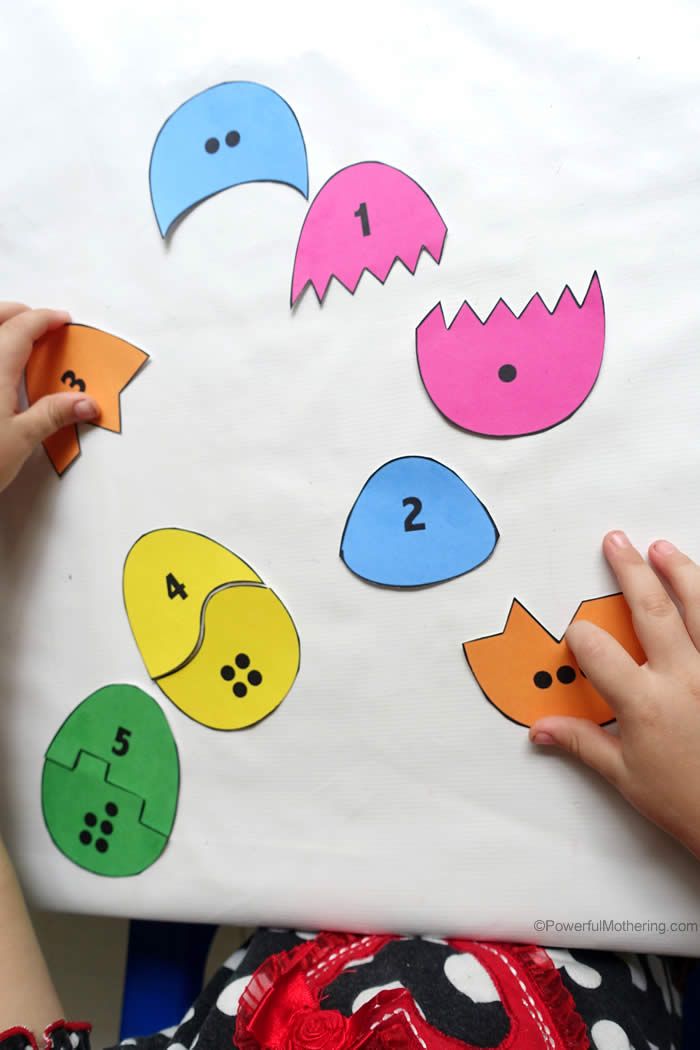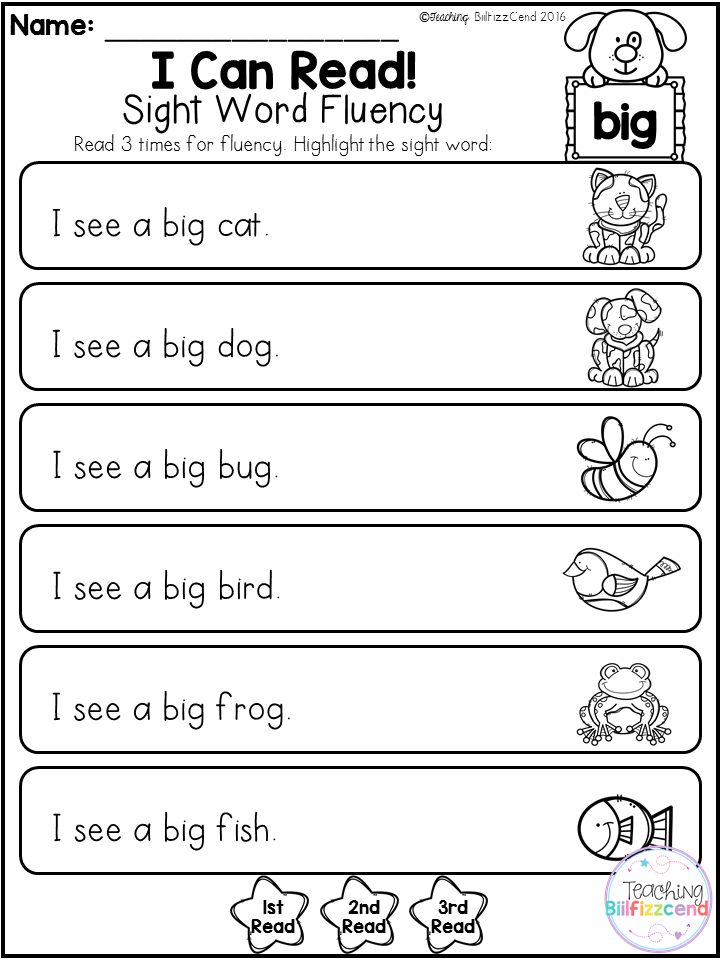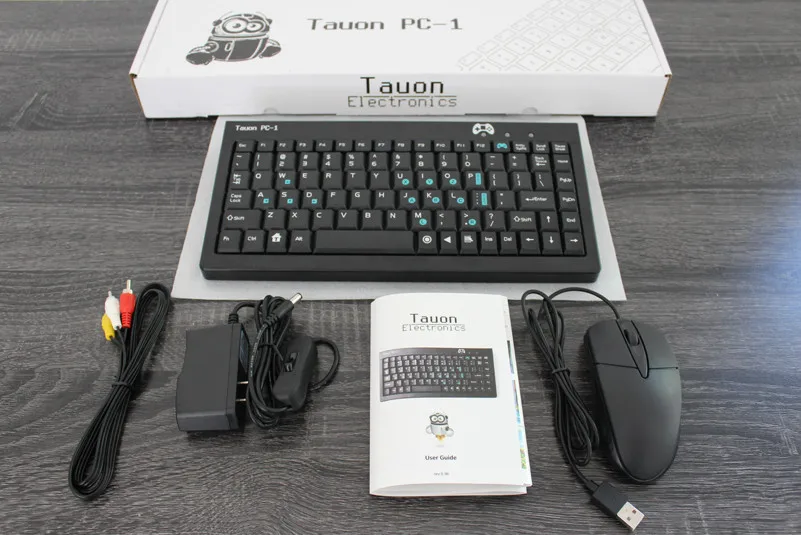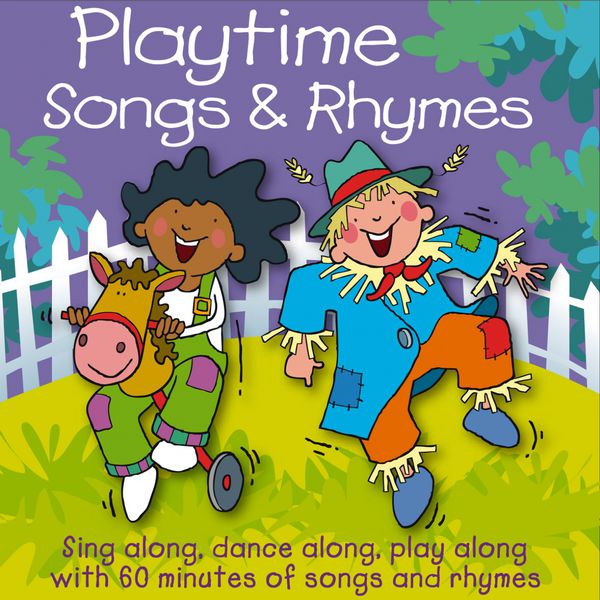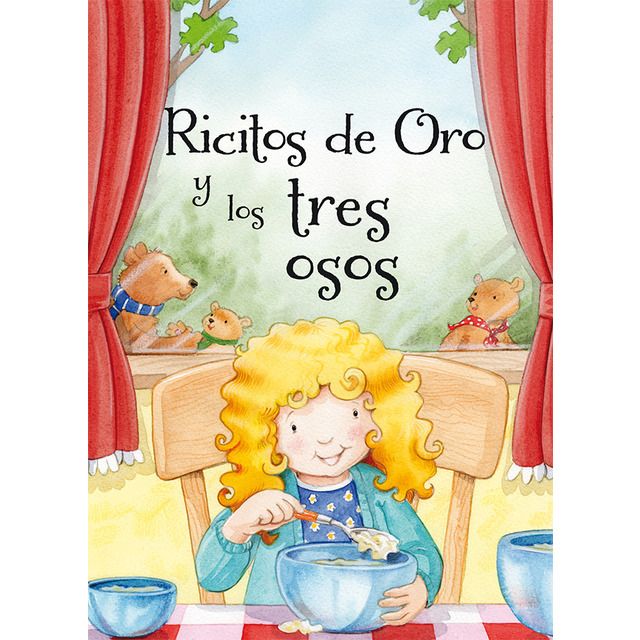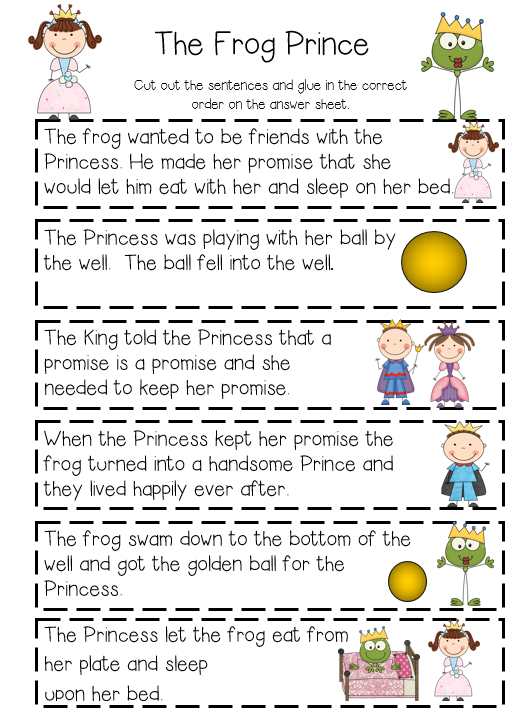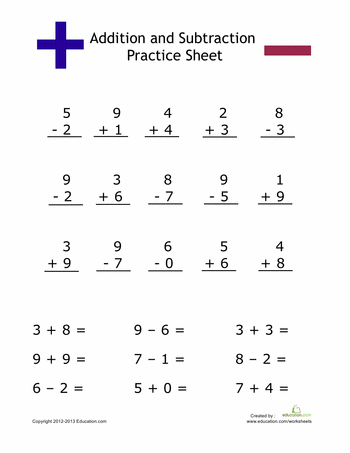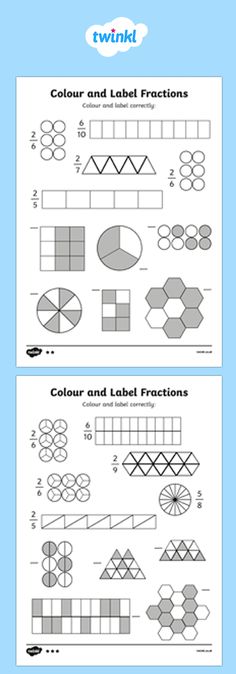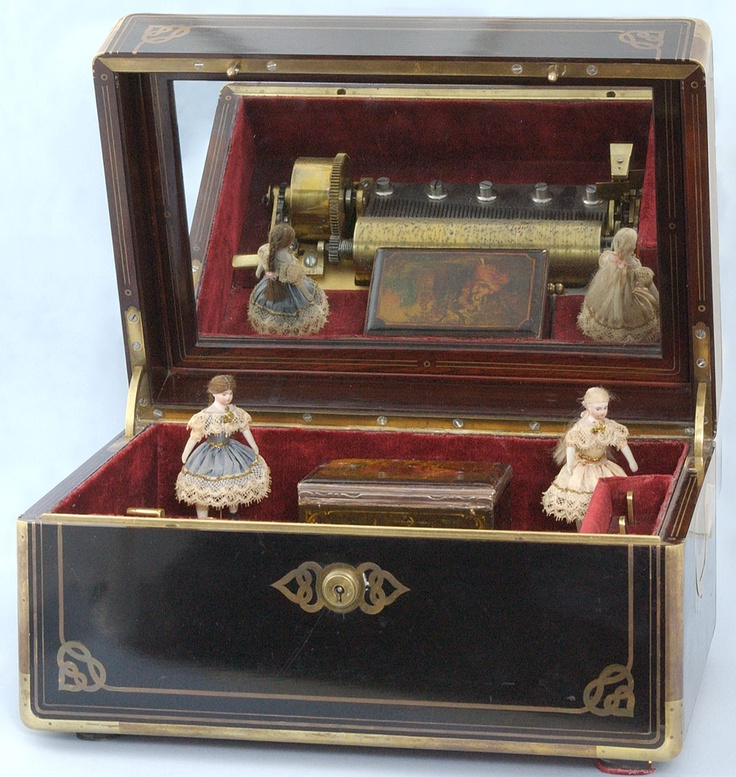Example of simple sentences for kids
How To Make The Most Of Simple Sentences For Kids
When a child finally learns how to construct their own simple sentences, for kids (and parents!), it’s a really special moment.
Word combinations such as “knee sore” turn into, “Mommy, my knee is sore.” Or “now juice” develops into, “Can I have some juice?”
There’s no denying the importance of sentences — they help us better express our thoughts and feelings. So the only question now is: How can you help your child start constructing their own sentences so that they, too, can communicate better?
Two words: simple sentences.
When Do Kids Start Forming Sentences?
Children start forming sentences once they know a few words. But language development is quite a journey!
Somewhere between 18 and 24 months, a toddler will begin constructing two-word “sentences,” like “want milk” or “no sleep.” At this stage, they are linking two or more words together to express an idea. This is the first step and a big milestone.
By four years old (sometimes earlier), most children are speaking in complete sentences. But that doesn’t mean they’ve reached the end of their sentence journey.
While your child may be speaking in complete sentences, finding playful ways to expose four and five year olds to sophisticated aspects of sentences while being kid appropriate is beneficial. This will help them continue developing their language skills.
One of the best ways to do so is to encourage children to speak in complex sentences to express their ideas. How? This can be achieved by simply resisting the temptation to simplify our own speech.
Remember that children are learning sponges! They will naturally pick up on the language habits you expose them to. So, continue speaking in complex sentences while in their presence. It’s not a bad thing if your child asks, “What does that mean?”
Of course, simple sentences come first.
What Makes A Simple Sentence?
A simple sentence is the most basic form of a sentence.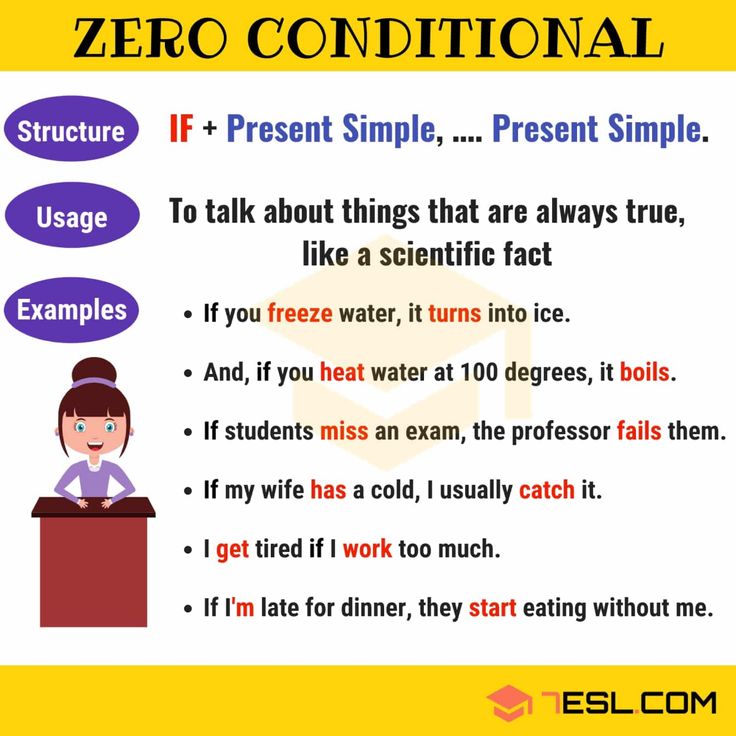 It contains only one independent clause — a group of words that forms a complete thought and is made up of a subject and predicate (which includes a verb and expresses what is said about the subject).
It contains only one independent clause — a group of words that forms a complete thought and is made up of a subject and predicate (which includes a verb and expresses what is said about the subject).
For example, in the simple sentence, Thomas kicks the ball, “Thomas” is the simple subject and “kicks the ball” is the predicate, with “kicks” being the verb, or simple predicate.
Simple sentences for kids are mostly short, but they can also be long. The length of the sentence isn’t the focus. What’s important is that the basic elements (subject and predicate) are always present.
When we communicate in our everyday lives, there’s usually a good mixture of both simple and more complex sentences without us even thinking about it. In order to help our kids reach this effortless communication stage, we need to help them understand the basics.
The good thing about the English language (and every other language, actually!) is that once you understand the basics, moving on to complicated structures is easier.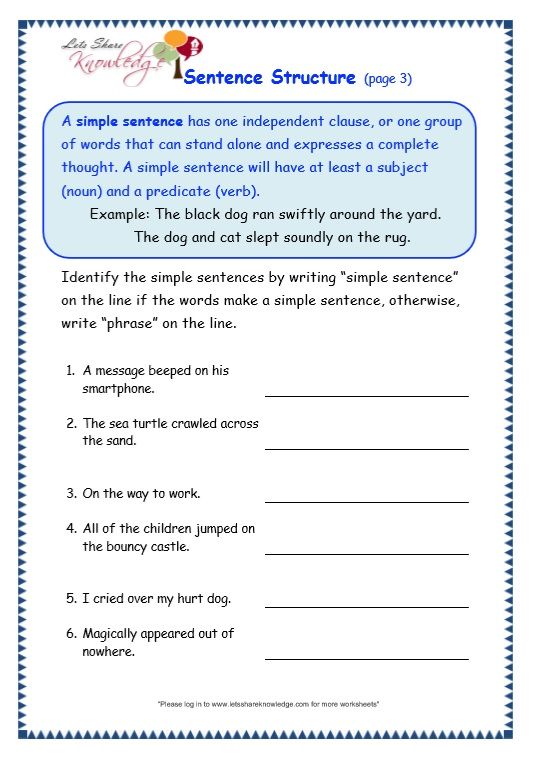
Simple Sentences For Kids To Act Out
One of the best ways for children to learn is through acting things out. If you have an active young child who enjoys moving around, why not use their energy to encourage some learning?
Here are some simple sentences for kids they will have fun acting out.
- He reads a book.
- The dog barks.
- The cat sits on the mat.
- I hop on one foot.
- The pig gobbles his food.
- The rooster crows.
With these sentences for kids, your child will have a blast while naturally learning what makes up a sentence!
Other Ways To Practice Sentences For Kids
1) Use Pictures
We recommend having your child use pictures to make up stories. You can even record the stories and listen to them for a little added fun!
If your child wants to write their ideas, too, that’s great! But don’t worry about standard spelling; much more important is the creative effort involved in thinking of a great story composed of interesting sentences of their own creation.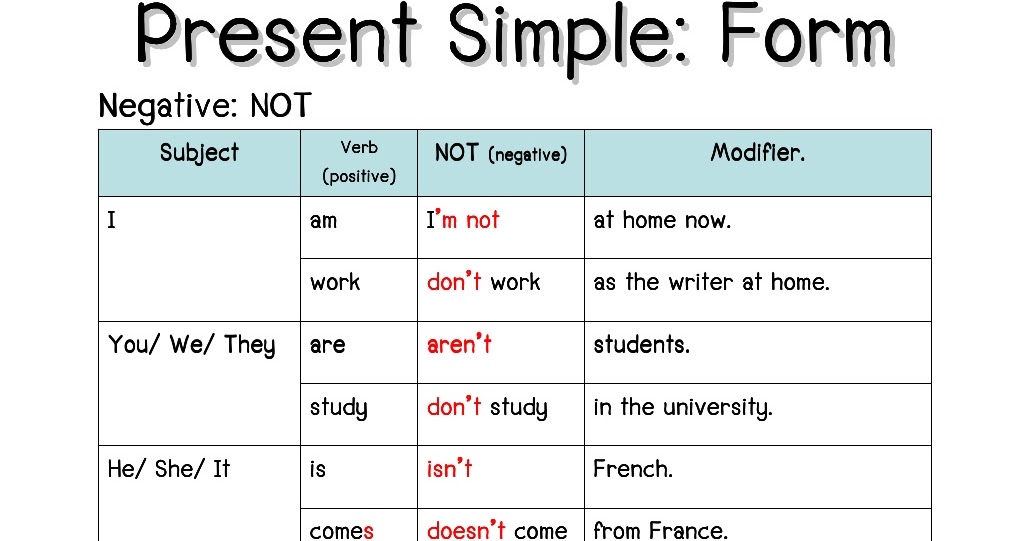
You can use pictures of animals, nature, sports, or even family photos. Then encourage your child to share whatever comes to their mind after having a look at these images.
During the first session, your child may need a few verbal prompts to help them get started. Simple questions like, “What’s happening in the picture?” or “What does this image remind you of?” can help to get their creativity flowing.
If you have multiple children, you can allow them to share what they came up with about the same image. As individuals, they will most likely think of different sentences, so this is a great opportunity to emphasize how everyone has unique ideas.
We encourage you to allow your children creative freedom here. The idea is to place an image in front of them and let them create anything they feel like creating.
2) Play Sentence Games
If you’ve been following our blog for a while, you’ll know one thing for sure — the HOMER team loves a good game! Games are not only fun, but they’re also great ways to help children remember fundamental learning concepts.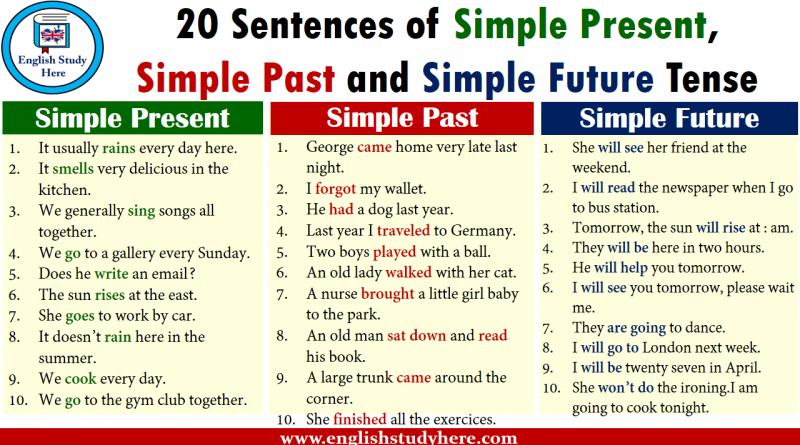
One of our favorite sentence games is Sentence Mix & Match.
What You’ll Need:
- Several index cards
- Markers to write with
What To Do:
- Write interesting subjects on half of the index cards (Ideally, these are things that your child likes. For example: dinosaurs, ice cream, different shapes, colors, etc.).
- On the other half, write predicates or sentence endings that make sense with your individual subjects.
- After writing, place the cards so that they make realistic sentences.
- Then, turn all the cards over and shuffle them. At this point, you want to ensure that you separate sentence beginnings and endings.
- After the shuffle, turn your cards over and discover what silly sentences you get.
- Remember to begin the subject cards with capital letters and sentence-endings cards with a period.
This is a fun activity to help children see that sentences are not always set in stone. They will also quickly learn that the meaning of a sentence can change when words get moved around.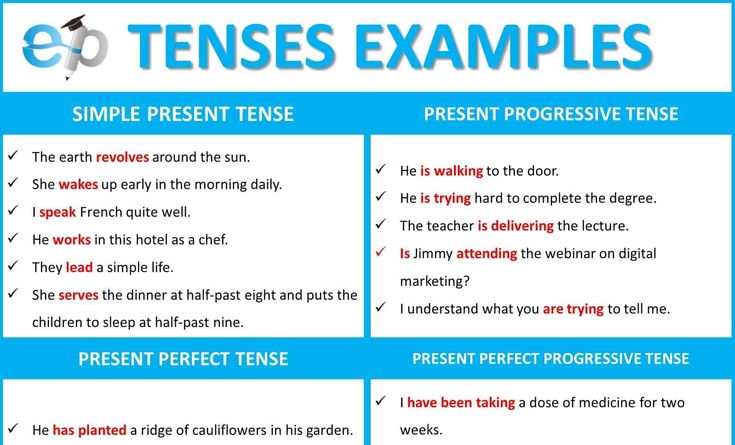
3) Play With Types Of Sentences
Sentence Mix & Match is not the only way to help children learn sentences for kids while also having fun. Another activity we’re huge fans of is playing with types of sentences. Specifically — statements, questions, and exclamations.
To get started, pick any simple sentence that your child will already be familiar with (e.g., “I like playing outside.”).
Next, encourage your child to say this same sentence as a statement, a question, and then an exclamation.
Similar to Sentence Mix & Match, this game helps children understand that minor tweaks can change the meaning of a sentence.
Children will come across punctuation marks during reading time, but they may not always understand the significance of each. This game will help your child learn how periods, question marks, and exclamation points affect a sentence.
5) Make A Switch
The subject and predicate for each simple sentence have a specific function.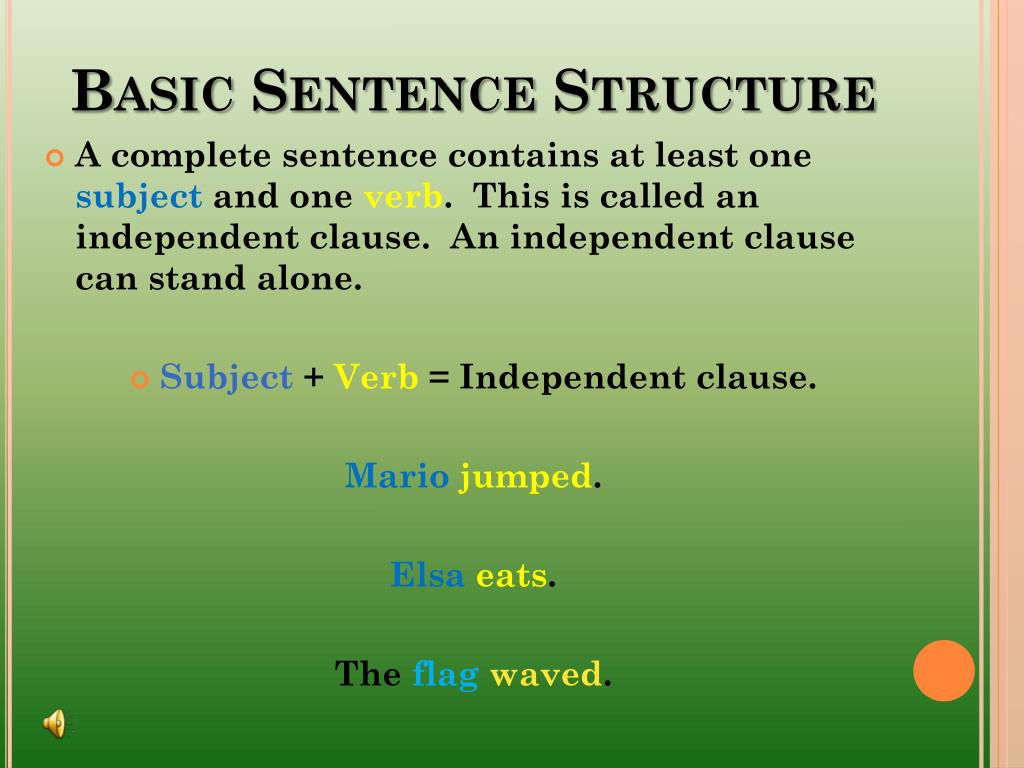 For children to use these correctly, they will need to understand what their roles are.
For children to use these correctly, they will need to understand what their roles are.
When kids start speaking as babies and then toddlers, they often repeat words, phrases, or the simple sentences they’ve heard from you, your partner, siblings, or other people around them.
At this stage, they haven’t fully grasped the functions of subjects and predicates. If we want to help our children develop their own sentences, we will need to help them understand the roles of these sentence parts.
A creative game they (and you!) will enjoy involves switching the subjects and predicates of a sentence.
Start with a simple three-word sentence, like, “A cat played.” Then take turns changing either the subject or the predicate of the sentence.
This may look something like this:
- A cat jumped
- A dog jumped
- A dog growled
- A gerbil growled
- A gerbil scampered
Once your young learner is confident switching three-word sentences, move on to four words, five words, and so forth.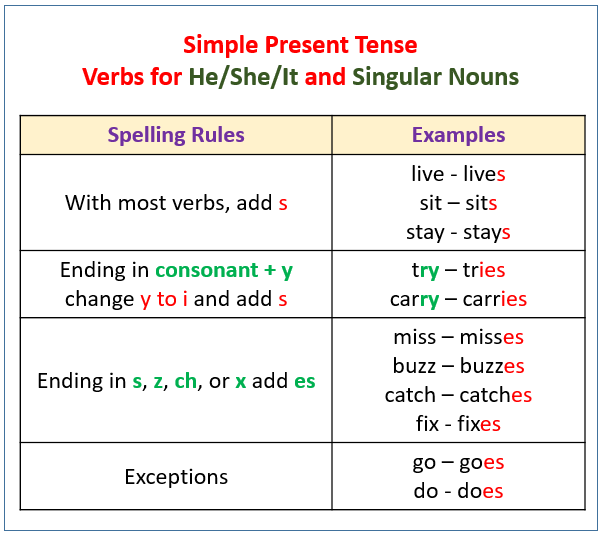
Through this fun activity, your child will start understanding the roles of predicates and subjects in sentences.
Simple Sentences For The Win!
A child’s language journey is pretty incredible. It often starts with lots of babbling and moves to single words. Soon, you get two-word combinations, and before you know it, you’re given a detailed account of what happened in class today.
As you’re doing the activities we’ve mentioned, remember to allow your child creative freedom. We know that language has a lot of rules, but that doesn’t mean it can’t be fun! Encourage your young learner to be as imaginative as they want to be.
For instance, if they write or say, “The lion growls at the dinosaur,” let’s celebrate the correct sentence construction and, for a moment, imagine a world where lions and dinosaurs exist in the same age!
For more fun and effective learning activities, check out the HOMER Learn & Grow app.
Author
Simple English Sentences for Kindergarten 3+: Language Development of Toddlers.
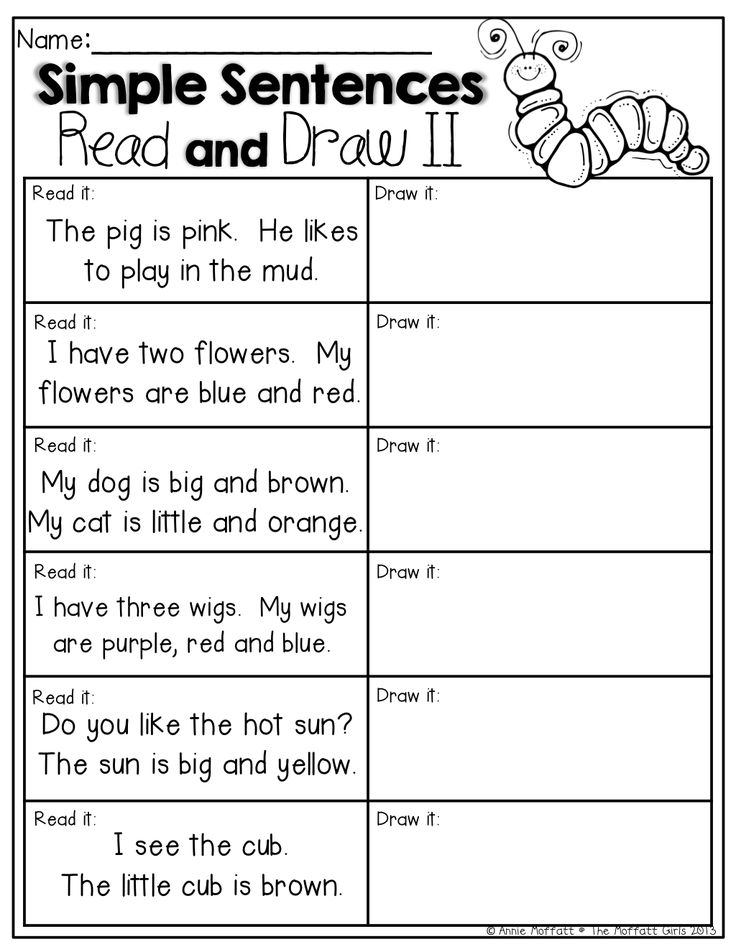 Simple English Sentences for Kindergarten 3+: Language Development of Toddlers.
Simple English Sentences for Kindergarten 3+: Language Development of Toddlers.
Press ESC to close
8757
2
2 Min Read
Sentence structure is the course of action of words in a sentence. A sentence is composed of words such as things, verbs, descriptive words and qualifiers.
Using an assortment of words once you talk to your child will offer assistance for your child to learn modern words. Verbs activity words like “dance”, “fall”, and “pour” are particularly vital for building sentences.
Other important words are:
The subject is often referred to as a noun or things that perform actions.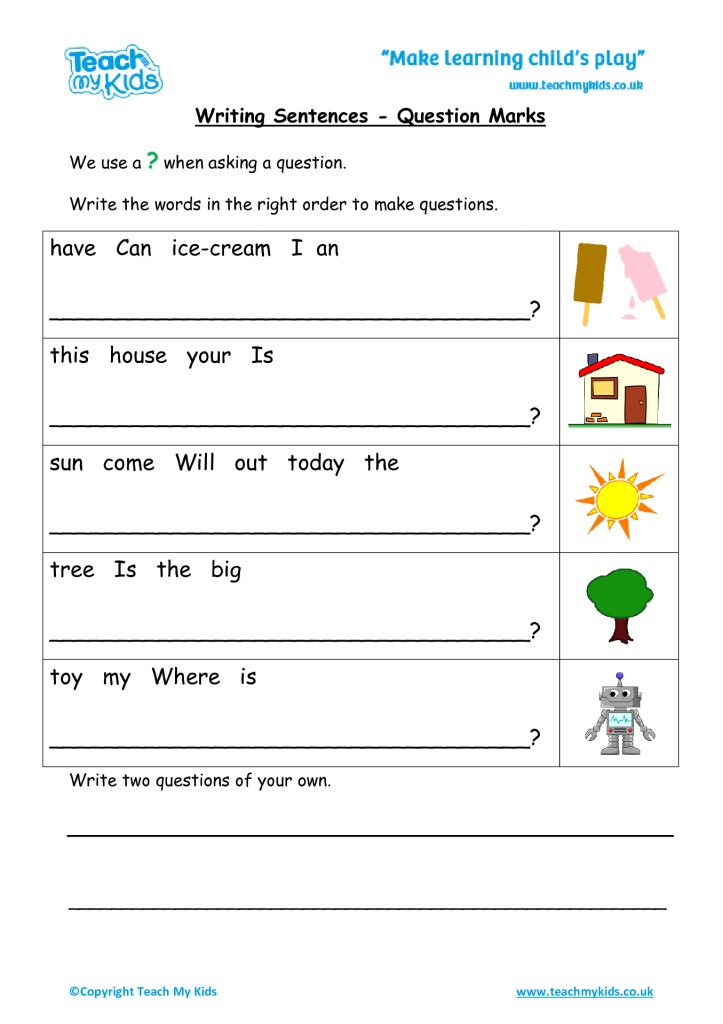
Example: The dog jumped.
The subject of this sentence is the thing, dog since it is jumping.
Example: Goats and buffaloes sleep.
The subjects of this sentence are nouns, goats and buffaloes. Usually called a compound subject since there’s more than one subject performing the same activity.
The object is often referred to as the nouns that receive the action.
Example: She is eating rice and dal.
The objects which are receiving the action in this sentence are the nouns, rice and dal.
Example: The child ate chips.
The object of this sentence is the noun, chips because the child is eating the chips. The chips are receiving the action.
Learning courses for your kids! Get free trial here
Five
Basic Sentence Structures- Subject-Verb (S-V)
Examples:
- The dog plays.
- Akshay laughs.
- Khushi sleeps.
- Subject-Verb-Object (S-V-O)
Examples:
- The boy bathes the cat.
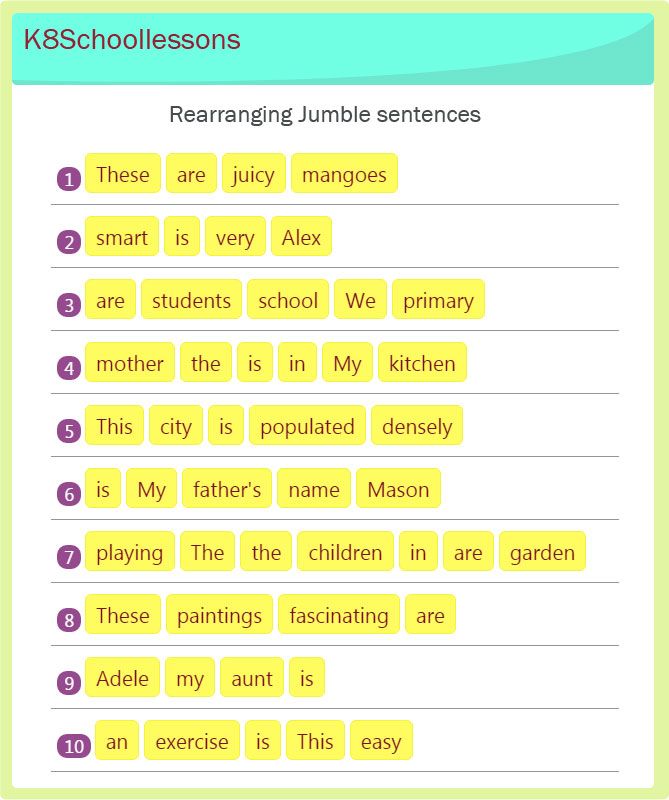
- I eat bananas.
- Rahul throws the ball.
- Subject-Verb-Adjective (S-V-Adj)
Examples:
- Mehak is beautiful.
- They are nice.
- I am hungry.
- Subject-Verb-Adverb (S-V-Adv)
Examples:
- Yesha laughs loudly.
- The bird flies high.
- Flowers are everywhere.
- Subject-Verb-Noun (S-V-N)
Examples:
- I am the principal.
- My Daddy is a fisherman.
- The girl is a student.
A simple sentence is a sentence that usually consists of just one independent clause. A simple sentence doesn’t have dependent clauses.
- I cannot drink warm milk.
- A day without sunshine is like night.
- I love playing.
- My favourite cartoon is Ninja Hattori.
Also Read: 100 Action Words in English: For Kindergarten to Class 1
Small
Sentences for Kindergarten- The pig is pink.

- Look at the cat.
- I live in a house.
- The apple is red.
- I have 5 flowers.
- The ball is green.
- I like to play.
- The jar has a lid.
- The swan is white.
- The van is blue.
Also Read: Rhyming Words for Kids: Everything You Want to Know
10
Simple English Sentences for Kids Along with PicturesI’m eating doughnuts.
The sun is hot.
He is my dad.
I see the bus.
I have a bat.
My crayon colour is Red.
The girl has long hair.
This is an ant.
Earth has one moon.
Learning courses for your kids! Get free trial here
20
Daily Use Small English Sentences For Kids- How about a hug?
- Sit up straight.
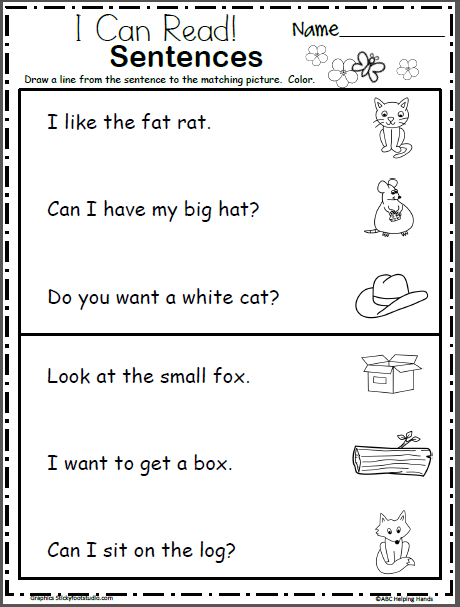
- Don’t be angry.
- Study here.
- Go to the bath.
- Speak softly.
- Don’t cry again.
- Stop talking.
- Have food.
- Watch carefully.
- Don’t tell her.
- Wait for me.
- Give it back.
- Bolt the door.
- Clean up.
- Walk slowly.
- Don’t go.
- Have your breakfast.
- Don’t cry again.
- Wake up
Also Read Is Learning Dependent on Cognitive Development? Guide to Better Development
Conclusion
Understanding sentences is essential because it offers details that make the listener understand and you communicate freely. It is the framework that expresses the exact sense of interaction between two people. Thus, remove mistakes from your speaking and reward your kids with direct communication with the help of the daily used sentences above. Introduce your kids to Simple English Sentences and prepare them for the future.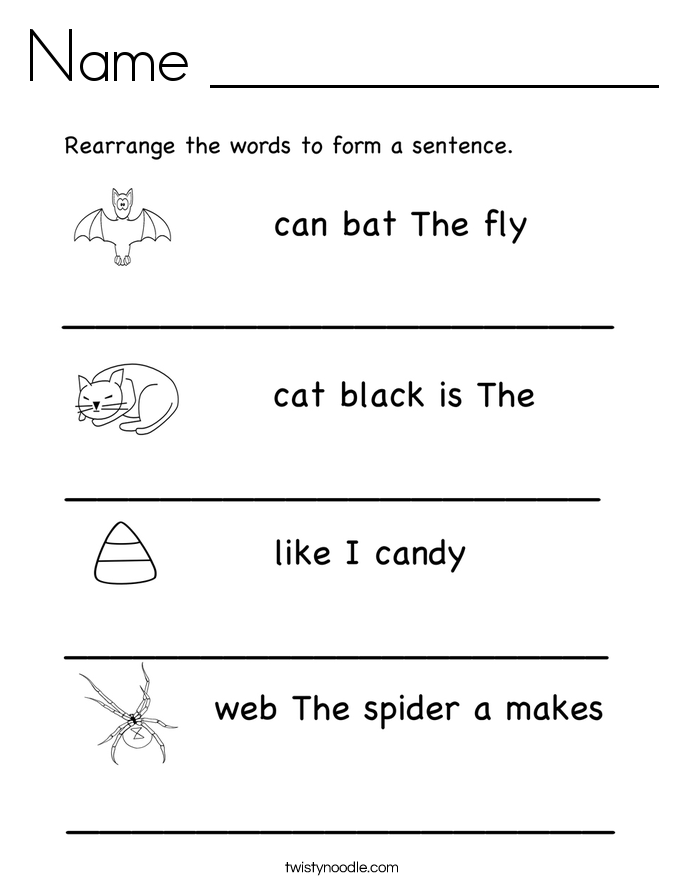 By using some of these simple sentences in your kids daily routine, you can build your child’s vocabulary and ability to communicate fluently.
By using some of these simple sentences in your kids daily routine, you can build your child’s vocabulary and ability to communicate fluently.
Hopefully, you found this article helpful. You can share your view with us by commenting in the below box.
Learning
About the Author
Other stories
How to Improve English Communication Skills for Kids? Pack your Kids the Success Bag of Communication Skills
Next Story
Rhyming words for Kids 4+ Yrs: Important Rhyming Words for Kindergarten Kids
Previous Story- Sign in
Lost your password? Please enter your email address.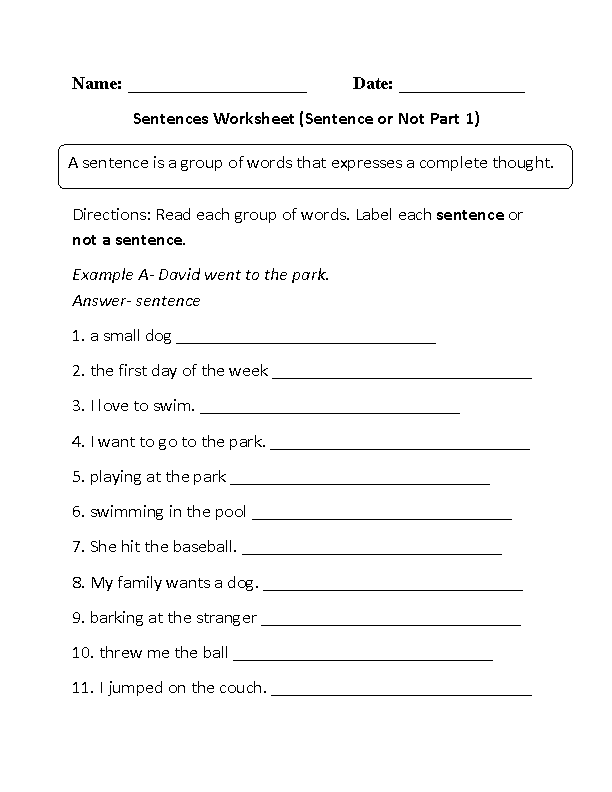 You will receive mail with link to set new password.
You will receive mail with link to set new password.
Email or Username
Back to login
close
Simple and complex sentences with examples (Grade 4, Russian)
4.6
Average grade: 4.6
Total grades received: 968.
In this article, intended for grade 4, we will consider what complex and simple sentences are, what this division of sentences is connected with, how to distinguish a simple sentence from a complex one.
Simple sentence
A simple sentence is a sentence with one grammatical basis.
In Russian there is only the term "simple sentences", the terms "light sentences" and "ordinary sentences" do not exist.
Complex sentence
A compound sentence is a sentence with two or more grammatical bases.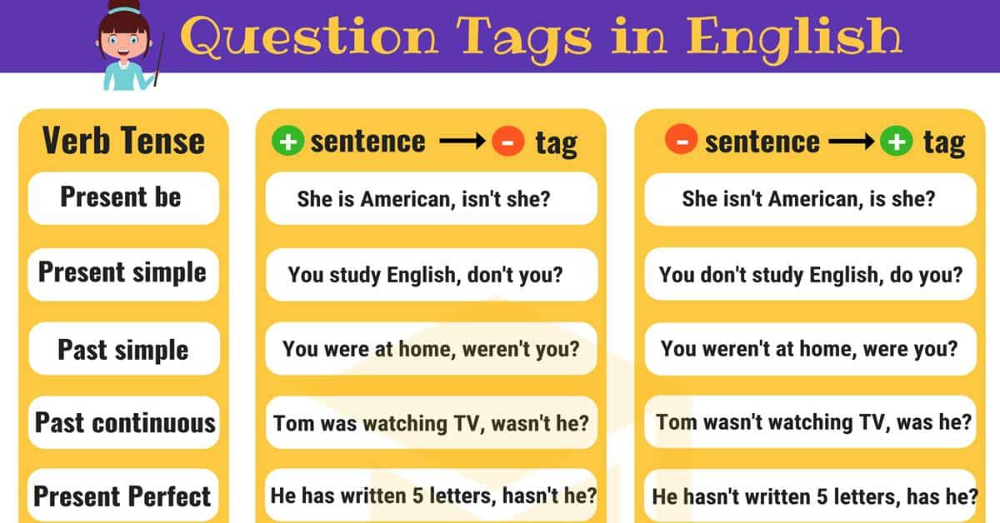
A complex sentence includes simple sentences. Simple sentences that are part of a complex sentence are related to each other in meaning and intonation.
Parts of a complex sentence complement each other, turn different information into one, more complete one.
Most often, commas are placed between parts of a complex sentence.
There may be conjunctions between the parts of a complex sentence, but they may also be absent. If there are no unions between parts of a complex sentence, then this is an union-free complex sentence; allied complex sentences are divided into compound (with coordinating unions) and complex (with subordinating unions).
How to tell?
A complex and simple sentence is closely related to the number of grammatical bases.
To understand when a sentence is simple and when it is complex, you need to count the number of grammatical foundations, which means that those who speak Russian must be able to correctly determine the grammatical foundations of sentences.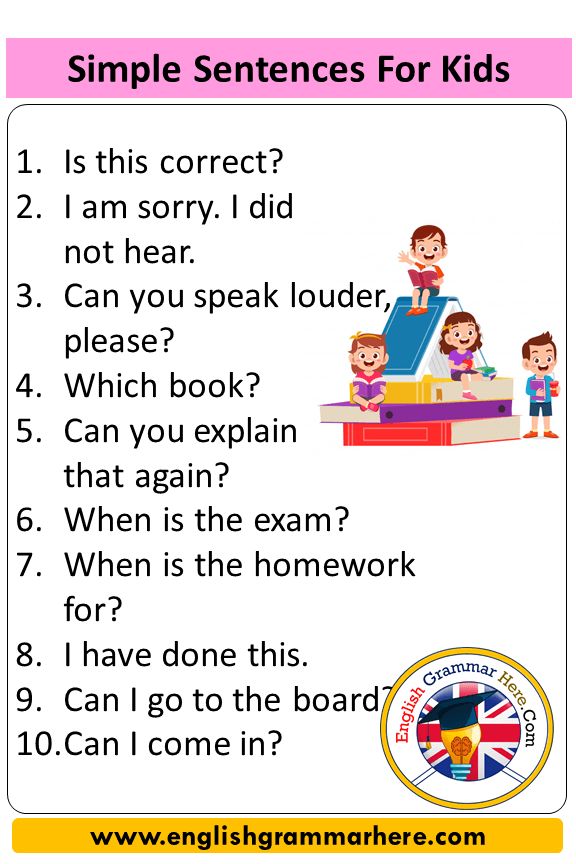 Without the ability to find the grammatical basis of a sentence, it is impossible to determine whether a particular sentence is simple or complex.
Without the ability to find the grammatical basis of a sentence, it is impossible to determine whether a particular sentence is simple or complex.
It is necessary to distinguish between an independent grammatical basis and homogeneous subjects or predicates. You also need to understand that the grammatical basis can be only the subject or only the predicate.
Let's compare simple sentences and complex sentences.
Examples of simple sentences:
- We rode the rides (1 grammatical basis: we rode).
- I went to my grandmother for the holidays (1 grammatical basis: I left).
- He opened the door and saw me (1 grammatical basis with homogeneous predicates: he opened and saw).
Examples of complex sentences:
- It's cold, the guys put on warm sweaters (2 grammatical bases: it's cold; the guys put it on).

- I left the school, but my mother has not come yet (2 grammatical bases: I left; my mother did not come).
- My friend came when the rain stopped (2 grammatical bases: friend came; the rain ended).
What have we learned?
Simple sentence - a sentence with one grammatical basis Complex sentence - a sentence with two or more grammatical bases. A complex sentence consists of simple sentences that are related in meaning and intonation. There can be conjunctions between parts of complex sentences. A simple sentence is distinguished from a complex sentence by the number of grammatical bases.
Subject test
Hall of Fame
To get here - pass the test.
-
Anastasia Muchkova
5/5
-
Martin Eden
5/5
-
Maxim Andreev
5/5
- 9000
5/5
-
Olya Sayfiddinova
4/5
WikiReading
Glenn Doman's early development methodology.
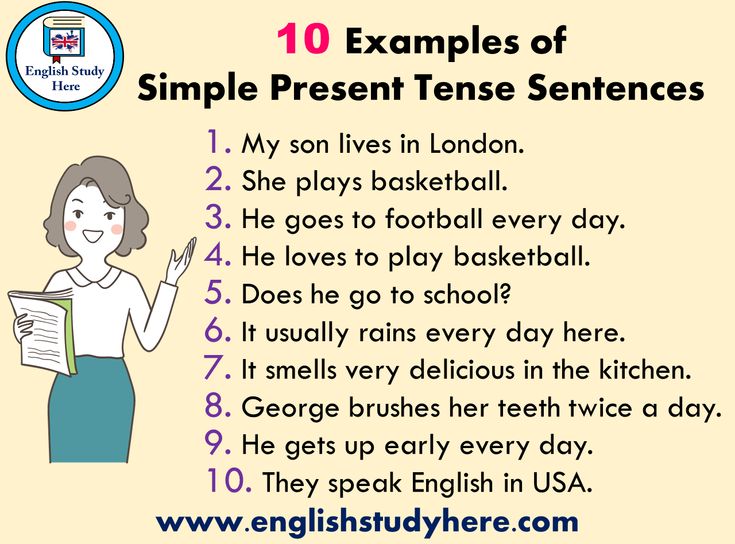 From 0 to 4 years
From 0 to 4 years
Straube E. A.Contents
Reading simple sentences
Glen Doman offers two ways to teach a child to read simple sentences.
Method 1
Use your 10x45 cm cards to make a set of 5 sentences. You will have to reduce the font size to fit 2-3 words on the card. Therefore, the height of the letters should now be 5 cm instead of 7.5.
Don't press the words together, let there be an empty white space between them so that they can "breathe" easily.
Show them to your child three times a day for no more than five days. Then start updating the set by removing 2 old sentences and inserting 2 new ones. Your child will learn them very quickly, so be ready to move on to new sentences without delay.
Method 2
Make a sentence book. This book will have 5 sentences and 1 illustration for each of them. Its size is 20x45 cm, the size of the red font is 5 cm.
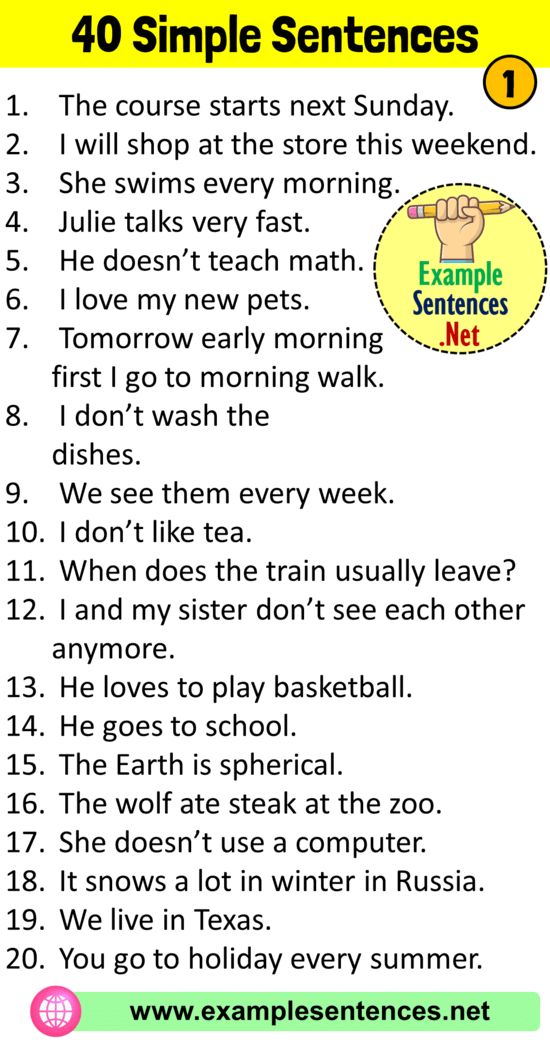
Start with the first ten pages, which you will read to your child two or three times a day. After a few days, make a new chapter based on the same vocabulary.
The book can be illustrated with photographs of the child himself when he performs this or that action. You will get an interesting diary of your child's life, for which all his photographs will be useful. As a rule, children are very fond of such albums and quickly learn the material illustrated by their own images.
This text is an introductory fragment.
Simple tasks
Simple Tasks Money example. Problem: The girl constantly begs for money for clothes, expensive toys and entertainment. A lot of money is spent on this uncontrollably, and there is no end to conflicts. Objective: To stop endless disputes on this topic.
 Or: Make her spend
Or: Make her spend Part III The Simple Secrets of Effective Youth Work
Part III Simple secrets of effective youth work "Walking alone" instead of "Walking together" In 2003, almost ten years have passed since I first met Khodorkovsky. Lyceum "Podmoskovny" stood confidently on its feet; based on several regional universities,
Step 3 Spell
Stage 3 We spell For the Journey of Words game, improve the train from the previous exercise - attach another trailer with a pocket to it. On the cards, write no longer letters, but syllables (after all, the baby already reads them confidently). Then the game is repeated, but visit
Stage 4 Reading offers
Stage 4 Reading offers For the game "Make a phrase" write on the cards the words in different grammatical forms.
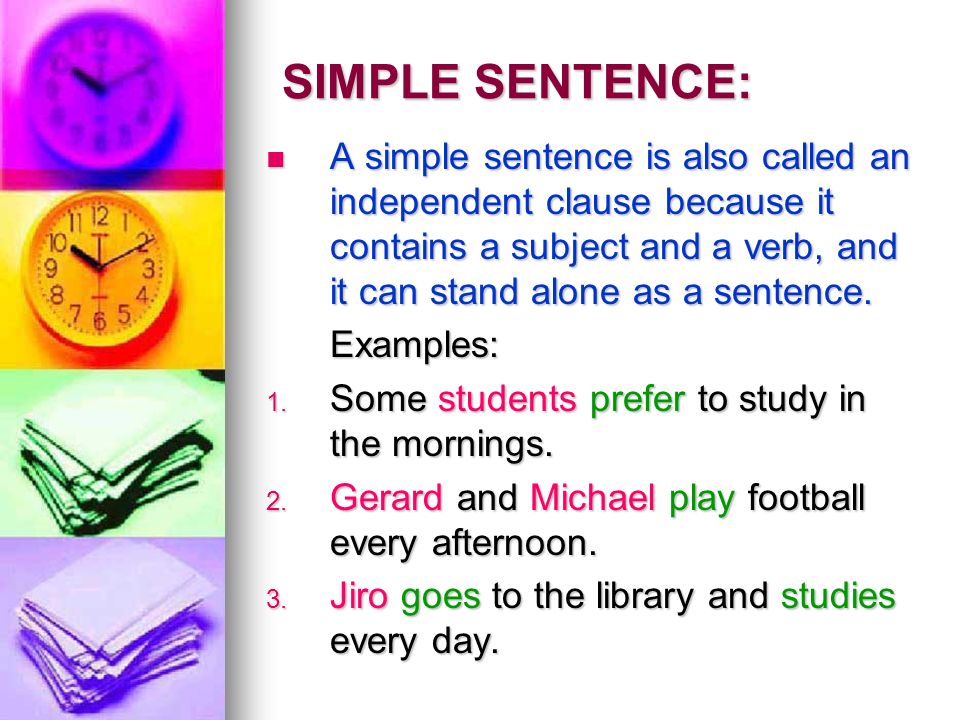 Invite the child to choose the right words and put them next to each other. For example: NEW DRESS IT'S TIME NEW YEAR CAME CHILDREN NEW TOY COME
Invite the child to choose the right words and put them next to each other. For example: NEW DRESS IT'S TIME NEW YEAR CAME CHILDREN NEW TOY COME Exercise 5 Reading
Exercise 5 Reading Along with writing comes reading. A child who makes up words from movable type on his own is already beginning to read. From words, as in writing, they move on to phrases, and from cursive to
.Exercise 15 Reading Tolstoy
Exercise 15 Reading Tolstoy We make homemade books: a picture remains on one page, and on the other we put a sentence taken from the texts of Leo Tolstoy's ABC. The child reads a sentence in a book and looks at the picture, comparing
Stage 4 Reading simple sentences
Stage 4 Reading simple sentences Having mastered phrases, the child will easily move on to simple sentences.
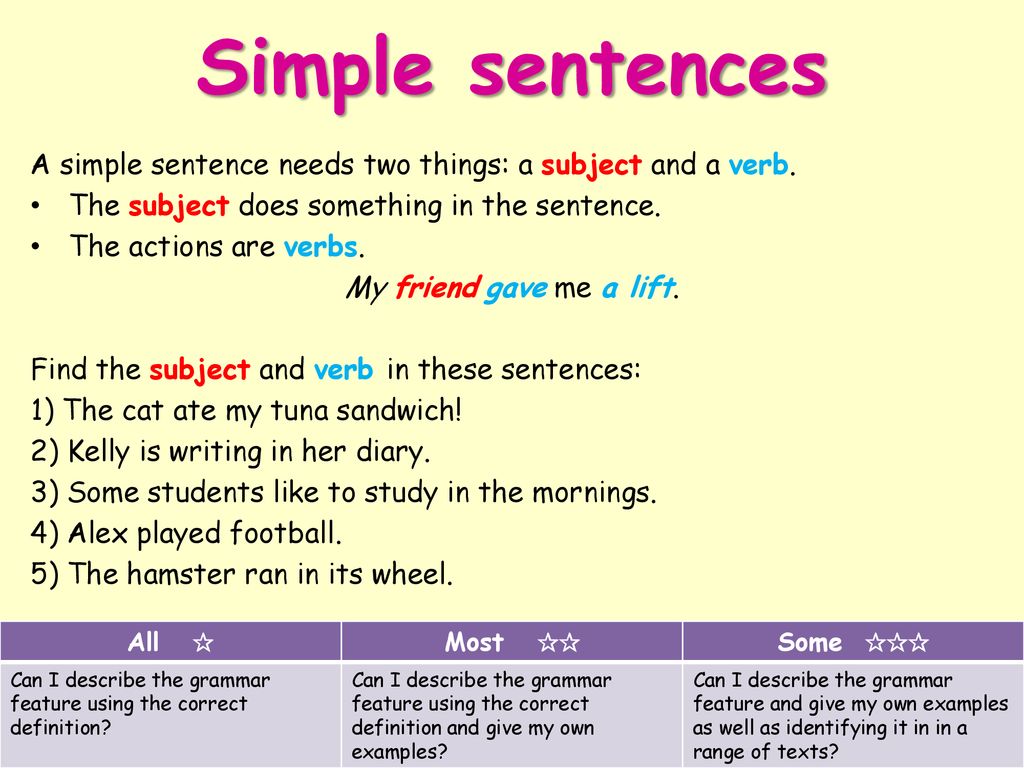 By this time, he probably knows how to read at least 70-100 words. From them you can easily compose simple phrases. For example: MOTHER IS GOING, THE CAT IS SLEEPING, MASHA RUNS. There are two
By this time, he probably knows how to read at least 70-100 words. From them you can easily compose simple phrases. For example: MOTHER IS GOING, THE CAT IS SLEEPING, MASHA RUNS. There are two Reading in a foreign language
Reading in a foreign language Try to have books in the child's library in the foreign language that you are studying with your child. Initially, these may just be picture books, because young children are not so much read books as they are looking at
Reading common sentences
Reading common offers By this stage, your child is already able to read complete sentences that express a complete thought. At this stage, it is necessary to increase the number of words in a sentence. If before that you chose from 5 nouns and 5 verbs one by one
Chapter 6 Honorable? Shall we play? Easy Ways to Solve Complex Problems
Chapter 6 Do we honor? Shall we play? Simple ways to solve complex problems How fairy tales help to cope with children's lies Many parents will be skeptical about the idea of fighting children's lies with the help of some fairy tales and stories.
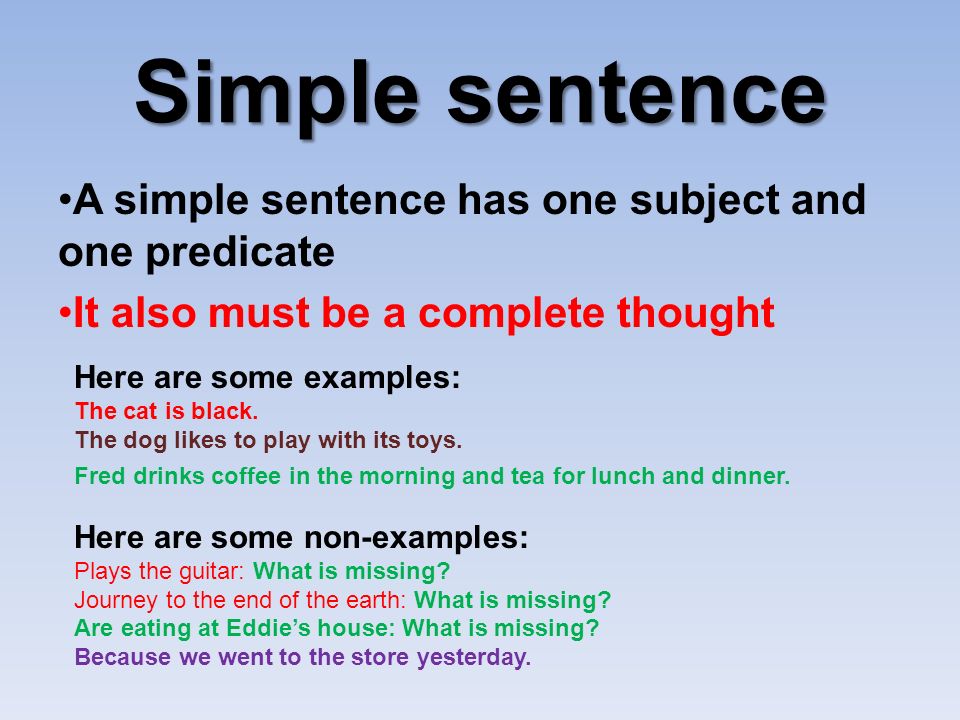 I have heard the opinion more than once that “you just don’t need
I have heard the opinion more than once that “you just don’t need Your sentences do not fit his type
Your offers don't suit his type We have already talked about the types of our eaters, so think about it, maybe you are offering your baby something that is completely incompatible with his type. If you want your butt to swallow lunch because you're late for something,
Easy and quick ways to cheer up
Simple and quick ways to cheer up • Play windmill. Show your child how to rotate their arms and legs to stimulate blood circulation and feel a surge of energy. • Try to sing a fun song or
18. Reading the face
18. We read in the face Age: 4-12 months Difficulty level: Intermediate Field of study: Emotional developmentExperiment You will perform the following series of tests twice: with a four-month-old baby and shortly before or shortly after he celebrates his first day
First offers
First offers The child's first sentences and sentences are reminiscent of a mean telegram or today's newspaper headlines - only nouns or only nouns and action verbs, such as "Bye, bibika.
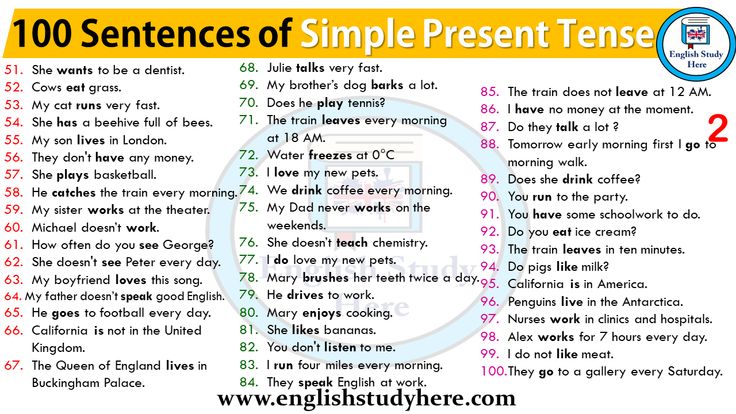
Learn more

